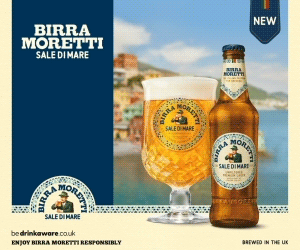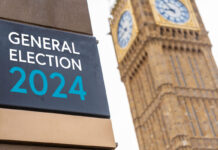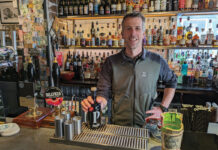
By Jack Cummins
The five licensing objectives set out in the Licensing (Scotland) Act 2005 are designed to guide and inform licensing boards’ approach to applications and review hearings, proving a sense of purpose lacking in previous legislation.
They focus on the potential for adverse consequences arising from the sale of alcohol in relation to crime and disorder, public nuisance, public safety and public health, as well as addressing the protection of children and young persons from harm. They’ve been described as the engine driving the Act; but how far does this engine run?
A while back I examined the ‘Brightcrew’ decision on this page, a case that put the brakes on decision making by licensing boards.
By way of recap, the Glasgow board rejected a premises licence application for an adult entertainment venue during transition to the 2005 Act. In so doing, they concerned themselves with the health and safety of the lap dancers. In the opinion of three senior judges, such an approach could not stand.
Here’s the key passage from their judgment: “It is important to note that the [licensing] objectives are not, so to speak ‘freestanding’. They are qualified by the introductory reference to there being ‘licensing objectives’. Since the licensing with which the statute is concerned is the licensing of the sale of alcohol, it follows in our view that… inconsistency with a licensing objective is inconsistency flowing from permitting the sale of alcohol on the premises in question.”
In essence, when considering the “protecting and improving public health” objective the board had no business concerning itself with matters governed by other legislation.
‘Brightcrew’ wasn’t the last word from the courts on the use of the objectives as the means of refusing an application. Other examples of their limitations soon followed.
The first concerned the “securing public safety” objective. Glasgow operators sought to vary their premises licence by the addition of an external drinking area. The licensing board refused the application because of their concern that the steepness of a stairway leading to the area compromises the safety of customers who may have consumed alcohol. Again, the decision was overturned on the basis that the board had wandered into territory that was outwith its jurisdiction – and its core function of regulating the sale of alcohol.
In fact, the area in question had been purpose built, was the subject of a building warrant and, overall, complied with building regulations. As the Sheriff observed in his judgment, matters of safety were not matters of impression: they were “truly issues for building control”.
The ‘Brightcrew’ principle required to be applied yet again when the Glasgow board refused to licence a pavement café area adjacent to a restaurant because, in their view, the “preventing public nuisance” licensing objective was engaged.
According to the board’s written reasons for their decision public nuisance would be “impossible to prevent” because of “congestion and inconvenience to pedestrians”.
Of course, there will be circumstances where a drinking area on a public footway might well give rise to legitimate concerns as to its suitability for alcohol sales.
Here, those potential concerns had been effectively ruled out: the area had the benefit of planning consent and the local council, as roads authority, had issued a permission to occupy the footpath subject to its usual conditions.
Reversing the board’s decision, the Sheriff’s ruling was in familiar terms.
There was no direct and material link here between the licensing of alcohol sales and the licensing objectives. In fact, as the applicant’s solicitor had pointed out, with other permissions in place, his clients were able to use the outside space for restaurant purposes and supply food and drink to customers. All they could not do was supply alcoholic drinks.
The importance of these cases and a number of similar decisions cannot be overestimated. In my view, if proper curbs had not been placed on the deployment of the licensing objectives in boards’ decision making, in all likelihood they would have become something akin to a ‘wildcard’ weaponised to justify the rejection of proposals where the real reason for the rejection may have sat elsewhere.


Q & A with Jack Cummins
Q: I’ve introduced alcohol-flavoured ice creams to my restaurant menu for the summer months and am now wondering whether I should treat these as age restricted so that we shouldn’t be serving it to customers aged under 18. What’s your opinion?
A: The addition of alcohol to food products raises this sort of question from time to time.
The starting point is the definition of alcohol set out in the Licensing (Scotland) Act 2005. ‘Alcohol’ means “spirits, wine, beer, cider or any other fermented, distilled or spirituous liquor” but does not include, among other things, “alcohol which is of a strength of 0.5% or less at the time of its sale”.
I’m not told the strength of the alcohol used to make the ice cream but I’ll address the question on the basis that it exceeds the 0.5% threshold. On one view, which appears to be the accepted position in England and Wales, the ice cream does require to be treated as ‘alcohol’.
The reasoning is fairly straightforward. Alcohol as a constituent of ice cream isn’t excluded from the definition but alcohol in liqueur confectionery is carved out. Note, however, that ‘liqueur confectionery’ is the subject of a separate, rather convoluted definition and cannot be sold to anyone under the age of 16.
But on this side of the border you’re likely to find licensing lawyers approaching this from a different angle. Note the reference to ‘liquor’ in the definition. Alcohol may be an ingredient in ice cream, but the finished product is solid at the point of consumption. While ‘liquor’ is something which you drink, ice cream is not (but alcohol-infused slushies probably fall into the ‘liquid category’).
That said, I’m inclined to recommend a risk-averse approach. No operator wants to become a test case if that can be avoided. On that basis, you wouldn’t sell the ice cream for consumption by persons under the age of 18 and the usual age-verification steps would require to be taken, including Challenge 25.
Do you have a legal question for Jack Cummins?
Email: sltn@peeblesmedia.com
Jack Cummins is unable to enter into personal correspondence on readers’ questions. The advice offered in SLTN is published for information only. No responsibility for loss occasioned by persons acting or refraining from action as a result of material contained on this page or elsewhere in SLTN can be accepted by the author or publisher.























